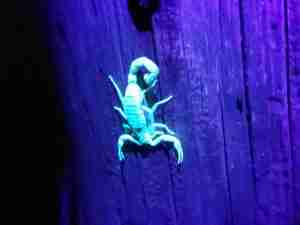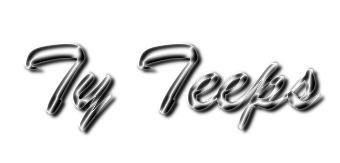Do Scorpions Glow in the Dark?

I am Tyler Teeples and I have been working in the pest control industry for over 30 years. I have learned a lot about termites and many other types of insects. I love that termites glow under a UV light and wanted to write an article about why.
Termites are fascinating creatures, known for their complex social structures and their ability to consume wood, causing significant damage to structures. However, one less known, yet intriguing aspect of termites is their reaction to black light, also known as ultraviolet (UV) light. The phenomenon of glowing under UV light is not unique to termites; many biological materials and organisms exhibit fluorescence when exposed to this spectrum of light. In this article, we delve into the scientific basis of this phenomenon and explore its implications for termite detection and control.
Firstly, it’s essential to understand what black light is and how it works. Black light emits ultraviolet radiation, which is a type of light that is not visible to the human eye. This light falls in the range of 315 to 400 nanometers. When UV light strikes certain materials, it can cause them to fluoresce, or glow. This happens because the materials absorb the UV light and then re-emit it almost immediately, but at a longer wavelength that humans can see.
Termites, like many other living organisms, contain compounds in their bodies that can fluoresce under UV light. This is particularly true for the exoskeleton of termites, which is made of a substance called chitin. Chitin is a long-chain polymer that is also found in other insects and arthropods. When exposed to UV light, chitin can absorb the light and re-emit it, resulting in a visible glow. This glowing effect is not just limited to live termites; even termite droppings, known as frass, and their nests can exhibit fluorescence.
The fluorescence of termites under UV light has practical applications, especially in the field of pest control. Traditional methods of termite detection often involve visual inspections and acoustic detectors to sense the sounds of termite activity. However, these methods can be time-consuming and may not always be effective, especially in early stages of infestation. The use of UV light can enhance the detection process. Pest control professionals can use UV light sources to scan areas suspected of termite presence. The glowing effect makes termites and their signs more visible, allowing for quicker and more accurate identification of infested areas.
Furthermore, this method of detection is non-invasive, which means that it does not cause any damage to the property during inspection. This is particularly beneficial for historical buildings or structures where minimal interference is crucial.
However, it’s important to note that while UV light can aid in detecting termites, it is not a standalone solution. The effectiveness of UV light in termite detection can be influenced by various factors such as the intensity of the light source, the distance from the termites, and environmental conditions like ambient light or the presence of other materials that might fluoresce.
In addition to its practical applications, the study of termite fluorescence can also contribute to a better understanding of termite biology and behavior. It can provide insights into the composition of their exoskeleton and how they interact with their environment.
In conclusion, the phenomenon of termites glowing under black light opens up new avenues in termite detection and control. This method, combined with traditional techniques, can enhance the effectiveness of termite management strategies. It also underscores the importance of interdisciplinary approaches in pest control, where knowledge from physics and biology can be integrated to develop more efficient and less invasive methods. As research continues, we may discover more about this fascinating aspect of termite biology and how it can be harnessed for practical applications.
